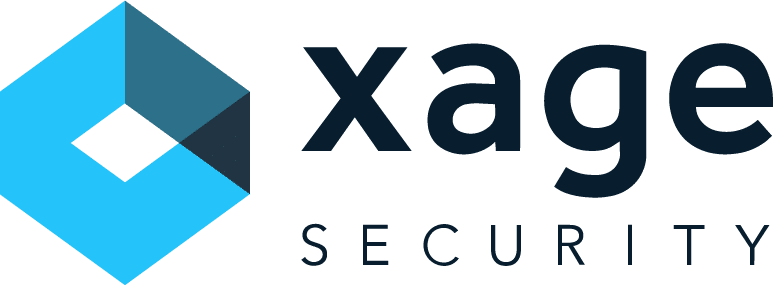Author: Amit Pawar, VP of Consulting and Services, Xage Security
The North American Electric Reliability Corporation (NERC) has raised the alarm regarding the safety of the U.S. power grid amid increasing demand, climate impacts, and cyber threats. These issues place utilities under pressure to maintain service delivery while safeguarding critical infrastructure from sophisticated cyberattacks. However, recent breaches have revealed significant vulnerabilities within industrial control environments that still rely on legacy access technologies—particularly outdated VPN solutions.

The Risks of Legacy VPN Solutions: Ivanti Connect Secure
An illustrative example of these vulnerabilities is Ivanti Connect Secure, a VPN solution widely used across multiple industries, including utilities. In early 2024, CISA issued an emergency directive requiring federal agencies to address critical zero-day vulnerabilities in Ivanti’s VPN systems. These vulnerabilities (CVE-2023-46805 and CVE-2024-21887) were actively exploited, allowing attackers to bypass authentication and gain administrative access to compromised networks without detection. Exploiting these flaws, threat actors could execute malicious commands, exfiltrate data, and establish persistent access, significantly heightening the risk of a full domain compromise. These attacks impacted over 2,000 VPN appliances worldwide, affecting not only federal agencies but also Fortune 500 companies and smaller organizations using Ivanti’s legacy technology. CISA’s directive required not only immediate disconnection of vulnerable Ivanti VPN systems but also recommended a full reimaging of compromised devices to eradicate embedded backdoors.
Why Legacy VPNs Fail to Meet Today’s Cybersecurity Demands
VPN solutions like Ivanti’s Connect Secure illustrate the dangers of relying on outdated security frameworks. The limitations of legacy systems include:
- Centralized Gateways: VPNs depend on a central point of access, which becomes a single point of failure if compromised. This makes them attractive targets for attackers.
- Authentication Bypass: Attackers using Ivanti’s vulnerabilities were able to bypass authentication protocols, gain privileged access, and move laterally through networks without detection.
- Mitigation Issues: Even after Ivanti released mitigations, attackers devised new workarounds that allowed them to evade security measures and remain undetected.
- Compliance Risks: Utilities using outdated VPNs may struggle to meet NERC-CIP standards, exposing themselves to regulatory penalties and reputational damage.
These challenges illustrate the critical need for utilities to adopt next-generation cybersecurity solutions that go beyond the limitations of legacy VPNs.
Xage Security: A Modern, Zero Trust Approach
Xage Security offers a comprehensive alternative by adopting a zero trust architecture designed to address the evolving threat landscape. Rather than assuming trust within a network, Xage’s solution ensures that every access attempt—whether by a user, device, or application—is authenticated, verified, and monitored. This proactive approach minimizes the risks associated with vulnerabilities like those found in Ivanti’s VPN systems.
Key Xage Capabilities for Utilities:
- Decentralized Policy Enforcement: Unlike centralized VPN solutions, Xage’s platform distributes security controls across multiple nodes. This makes the system resilient to network disruptions and prevents a single point of failure.
- Granular Access Control: Xage ensures that every user and device interaction is tracked and audited, reducing the potential for lateral movement by attackers. This is critical for meeting NERC-CIP compliance requirements.
- Password and Certificate Management: Xage supports automated password rotation and certificate enrollment for various field devices, such as relays, RTUs, and PLCs. This eliminates the reliance on static credentials, which attackers can easily exploit.
- Seamless User Experience: By enabling authentication with enterprise credentials, Xage eliminates the need for device-specific logins, making it harder for attackers to use stolen passwords or brute-force credentials.
NERC-CIP Compliance Made Easy with Xage
Meeting NERC-CIP requirements involves complex policy management, continuous auditing, and real-time access control. Xage streamlines compliance by automating key security tasks:
- Automated Access Management: With Xage, utilities can automatically revoke access for terminated employees across all devices and systems using a single policy change.
- Audit Logging and Integration: Every access attempt is logged and sent to SIEM systems, ensuring real-time alerting and incident response. This is essential for utilities to detect and mitigate threats before they escalate.
- Resilience Against Network Disruptions: If a site loses connectivity, Xage’s distributed enforcement ensures that policies remain active locally, preventing unauthorized access even during downtime.
Future-Proofing Utilities with Xage Security
The recent vulnerabilities found in Ivanti’s Connect Secure underscore the urgency for utilities to move beyond legacy VPNs. In today’s rapidly evolving threat landscape, relying on outdated technologies can lead to catastrophic breaches, operational disruptions, and non-compliance risks. Xage’s zero trust platform provides a secure, scalable, and resilient solution that protects critical infrastructure and ensures compliance with regulatory standards like NERC-CIP.
By adopting Xage Security, utilities can protect their assets against evolving cyber threats, reduce their exposure to regulatory risks, and future-proof their operations. In doing so, they can ensure continuous, secure service delivery, even as the cyber threat landscape grows increasingly complex.









